Thingiverse
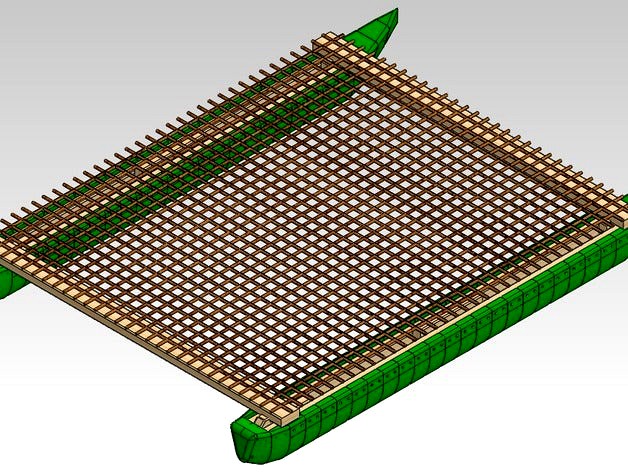
Sea Sled: Outrigger/Catamaran Hull Sections by 4ndy
by Thingiverse
Last crawled date: 2 years, 12 months ago
Thingiverse has enough toy boats now, so I designed these segments for a 3D-printable ama/outrigger that could actually be used for hull(s) as part of a wee catamaraft or an outrigger canoe. (Starting with a beautiful excited ms-paint concept sketch that preceded a couple days of thought and a night of CAD :)
http://en.wikipedia.org/wiki/Ama_%28sailing%29http://en.wikipedia.org/wiki/Outrigger_canoehttp://en.wikipedia.org/wiki/Catamaran
STL and STEP files are provided of original blanks and my 3x2/4x2 model, so that hopefully you can adjust this design to whatever size you want and fittings you have available. A SolidWorks eDrawings file is also available to get a quick look at my suggested assembly. Actual rope lashings are not shown, but I hope you can figure out something as simple as cris-crossing a rope to lash 2 beams together, since representing it in a CAD drawing is tedious. Not all the nails are in this diagram either due to defining mates for either end of the assembly being a pain (I've learned to use octagonal holes outside the X-Y plane instead of circular, for ease of printing).
My current pre-holed versions of these models are adjusted so they should fit nicely with 6ft-long beams of 2x3" or 2x4" wood cut to standard North American softwood lumber dimensions:http://en.wikipedia.org/wiki/Lumber#Dimensional_lumber
The design shows 6ft 2x3's in the sides holding the outriggers straight, but this could be achieved with shorter scrap lengths by staggering them along either side. A few 1ft-long 2x4's are shown cut to a roughly appropriate shape, but longer beams would be better, and the lateral beams (aka) are 5ft lengths of 2x4" with a notch on one flat side near either end to aid holding position to lashing points.
The nails shown are some 3mm by 45mm aluminium roofing nails that I've just got hold of (if you're going to use metal fasteners at sea, high-grade stainless steel, admiralty brass or aluminium is a must), and there are holes between each designed section that could be used for 6x25mm dowels.
Not shown in pictures yet is a hole that I added across each bow, which could have rope tied through it for rigging or carrying. The two holes shown at the back could be used for a pivot-and-pin adjustable rudder, so that it can be pulled up when launching/beaching and dropped&pinned into place during strong winds.
I might add some more part designs later to enable a very small sail to be rigged easily; when I have time of course, there are so many other fun and useful projects that I could try working on.
Bonus points if you can build one with a sail, solar panel, battery, Arduino GPS Shield, sensors and actuators, and have it circumnavigate the globe autononmously. Zero-fuel automated freight is one goal that I hope we can aim to develop towards (and past :)
http://en.wikipedia.org/wiki/Ama_%28sailing%29http://en.wikipedia.org/wiki/Outrigger_canoehttp://en.wikipedia.org/wiki/Catamaran
STL and STEP files are provided of original blanks and my 3x2/4x2 model, so that hopefully you can adjust this design to whatever size you want and fittings you have available. A SolidWorks eDrawings file is also available to get a quick look at my suggested assembly. Actual rope lashings are not shown, but I hope you can figure out something as simple as cris-crossing a rope to lash 2 beams together, since representing it in a CAD drawing is tedious. Not all the nails are in this diagram either due to defining mates for either end of the assembly being a pain (I've learned to use octagonal holes outside the X-Y plane instead of circular, for ease of printing).
My current pre-holed versions of these models are adjusted so they should fit nicely with 6ft-long beams of 2x3" or 2x4" wood cut to standard North American softwood lumber dimensions:http://en.wikipedia.org/wiki/Lumber#Dimensional_lumber
The design shows 6ft 2x3's in the sides holding the outriggers straight, but this could be achieved with shorter scrap lengths by staggering them along either side. A few 1ft-long 2x4's are shown cut to a roughly appropriate shape, but longer beams would be better, and the lateral beams (aka) are 5ft lengths of 2x4" with a notch on one flat side near either end to aid holding position to lashing points.
The nails shown are some 3mm by 45mm aluminium roofing nails that I've just got hold of (if you're going to use metal fasteners at sea, high-grade stainless steel, admiralty brass or aluminium is a must), and there are holes between each designed section that could be used for 6x25mm dowels.
Not shown in pictures yet is a hole that I added across each bow, which could have rope tied through it for rigging or carrying. The two holes shown at the back could be used for a pivot-and-pin adjustable rudder, so that it can be pulled up when launching/beaching and dropped&pinned into place during strong winds.
I might add some more part designs later to enable a very small sail to be rigged easily; when I have time of course, there are so many other fun and useful projects that I could try working on.
Bonus points if you can build one with a sail, solar panel, battery, Arduino GPS Shield, sensors and actuators, and have it circumnavigate the globe autononmously. Zero-fuel automated freight is one goal that I hope we can aim to develop towards (and past :)
Similar models
3dwarehouse
free

2x3 wood stud
...kipedia.org/wiki/lumber#dimensional_lumber 2x3 (nominal size) 1½″ × 2½″ (38×64 mm) (actual size) #dimensional #lumber #stud #wood
3dwarehouse
free

Sketchyphysics Catamaran
...sketchyphysics catamaran
3dwarehouse
it really sails! #boat #catamaran #hull #physics #sail #sketchy
renderosity
$10
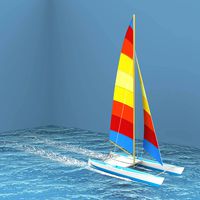
Cooks Catamaran For Vue
...'s catamaran also includes a foam wake for use when the boat is traveling over relatively flat water at high speed.</p>
thingiverse
free

Boat hull mesh -soap dish by Industrialdesigns
...ngiverse
this is a catamaran boat hull that i applied a mesh surface to so i could use it as a soap dish . fun functional design
3dwarehouse
free

catamaran
...catamaran
3dwarehouse
twin hulled sailing boat #boat #sailing
thingiverse
free

Happy helper 2x4 holder by Jayson
...pports a finished 2x4 from another finished 2x4 post so you can fasten one end then fasten the other which the helper was holding
thingiverse
free

5mm Prusik Buddy by vermontbicycleshop
... great way to manage hanging a tarp or other lighter objects.
learn about prusik knots here: https://en.wikipedia.org/wiki/prusik
3dwarehouse
free

2x4 Dimensional Lumber Set
...r set
3dwarehouse
pine 2x4 dimensional lumber set. includes 4ft. 6ft. 8ft. 10ft. & 12ft. models with hd, realistic textures.
thingiverse
free

Playmobil Guillotine by monchete
... i will update the model. enjoy it.
https://en.wikipedia.org/wiki/guillotine
enjoy the model but don't forget you can sell it
thingiverse
free

Filament holder for 2x4 Lumber by jbukont
...d the spool keeper by 45 degrees to improve ability to hold spool when mounted to angled lumber (as in my photos and workspace.)
4Ndy
thingiverse
free

Bracer by 4ndy
...racer by 4ndy
thingiverse
a simple forearm-protector for archery.
intended for sporting use. none of that nasty agincourt stuff.
thingiverse
free

Tapping Wrench by 4ndy
...ole-tapping bits.
cheaper than any other wrench if you only want to get a couple of specifically-sized taps made from good steel.
thingiverse
free
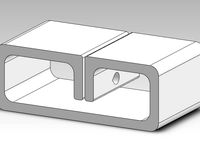
Sandpaper Holder by 4ndy
... of sandpaper cut to 40mm wide by just over 200mm long, but with the files included it should be easy to re-design to your needs.
thingiverse
free

Slimline Lightweight Mendel Vertex by 4ndy
...by adapting a 3d model from marcus' thing.
the resulting part is 13mm thick and prints easily with no noticeable warp issues.
thingiverse
free

Filament Clip for Hinged Accessible Extruder by 4ndy
...olve the problem of filament pulling loose from the drive at extremes on the x-axis, while still keeping the drive it accessible.
thingiverse
free

Golf Tee (Flat-Pack) by 4ndy
...id.
you should be able to fit a few in a pocket quite easily and you could even use one section to repair divots and pitch marks.
thingiverse
free
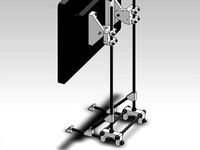
Adjustable Monitor Stand by 4ndy
...
i'm currently looking at a monitor on its built-in stand that ruins my posture when working, so i hope to make one of these.
thingiverse
free

Modular Printable Spool by 4ndy
...with a horizontal axle. you should probably only use it on its side if you have glued/welded the segments together on the bottom.
thingiverse
free

Recycling Bin Key by 4ndy
... grip, a string hole easier to thread, less material, and extra strength at the base of the corner. also it looks way cooler. ^_^
thingiverse
free

Thumb Crank for NEMA17 Motor Shaft by 4ndy
...t.
edit:
now includes an igs file, for extra compatibility. i encourage everyone to use transferrable formats like iges and step.
Outrigger
3ddd
$1

Boconcept Outrigger Floor Lamp
...rigger торшер.
информация:http://www.boconcept.com/en-ca/accessories/lamps/lamps/floor-lamps/3003/outrigger-floor-lamp
3d_export
$80

dump truck with elevator crane outriggers
...
dump truck with elevator crane, outriggers files format includes: stl, step, solidworks, sketch up, inventer, iges, 3d dxf, creo
turbosquid
$20

Base with MPT Short outriggers truss
...odel base with mpt short outriggers truss for download as c4d on turbosquid: 3d models for games, architecture, videos. (1383111)
3ddd
$1

BoConcept
..., вешалка , часы набор из предметов от boconcept! grip,metro,outriggerwatch ...
3ddd
$1

A-DIZ3dMODELS BoConcept lamp Floor
...a-diz3dmodels boconcept lamp floor 3ddd boconcept http://www.boconcept.com/en-us/accessories/lamps/lamps/floor-lamps/3003/3002/outriggerfloor-lamp ...
3ddd
$1
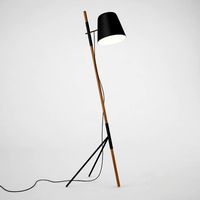
Floor lamp
...3ddd light , floor lamp , floor , boconcept http://www.boconcept.com/en-us/accessories/lamps/lamps/floor-lamps/9583/7742/outriggerfloor-lamp ...
3d_export
$120

gas carrier at the berth
...with gas carrier, loading arms and an overpass. the outrigger part of the berth. gas carrier of icebreaking type....
3d_export
$263

Seaport
...structures, fire-fighting facilities and reservoirs), and the root and outrigger part of the berth with an ice-type gas carrier,...
3d_export
$175
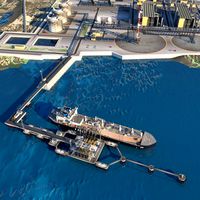
sea port
...sea port 3dexport sea port with gas carrier, mooring outrigger coastal zone, lng plant and oil terminal. port infrastructure....
free3d
free

Outrigger Canoe v1
...outrigger canoe v1
free3d
outrigger canoe v1 printable, low poly model.
Catamaran
archibase_planet
free

Catamaran
...catamaran
archibase planet
catamaran boat motorboat
catamaran boat n010613 - 3d exterior 3d visualization.
turbosquid
$100

Catamaran
... available on turbo squid, the world's leading provider of digital 3d models for visualization, films, television, and games.
3d_ocean
$16
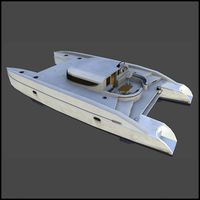
Catamaran
...ygonal model, easy to animate. - poly count: 822 - formats: max /obj /fbx/3ds/dxf - high detail was preserved with 2048...
3d_export
$17
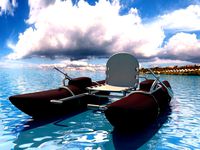
catamaran
...hat will enhance the detail and realism of any of your rendering projects.<br>available 3d file format: max2012,obj,fbx,stl
archive3d
free
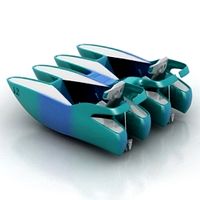
Catamaran 3D Model
...model
archive3d
catamaran boat motorboat
catamaran boat n010613 - 3d exterior 3d visualization.
turbosquid
$199

Catamaran Whisper
...
royalty free 3d model catamaran whisper for download as max on turbosquid: 3d models for games, architecture, videos. (1191347)
turbosquid
$5

Catamaran CruiseFerry
...yalty free 3d model catamaran cruiseferry for download as 3dm on turbosquid: 3d models for games, architecture, videos. (1682757)
turbosquid
$5

katamaran, catamaran
...l katamaran, catamaran for download as 3ds, max, obj, and fbx on turbosquid: 3d models for games, architecture, videos. (1217631)
turbosquid
$35

Catamaran 3d
... available on turbo squid, the world's leading provider of digital 3d models for visualization, films, television, and games.
turbosquid
$500

SHIP CATAMARAN 01
...odel ship catamaran 01 for download as 3ds, obj, 3dm, and dwg on turbosquid: 3d models for games, architecture, videos. (1379133)
Sled
3d_ocean
$12

Sled
...sled
3docean
sledge sledging sleg sleigh snow winter
a sled made of plywood facecount unsubsurfed: about 10.000
turbosquid
$1

sled
...lty free 3d model sled for download as max, 3ds, fbx, and stl on turbosquid: 3d models for games, architecture, videos. (1673763)
turbosquid
$15

Sled
... available on turbo squid, the world's leading provider of digital 3d models for visualization, films, television, and games.
turbosquid
$15

sled
... available on turbo squid, the world's leading provider of digital 3d models for visualization, films, television, and games.
turbosquid
$12

Sled
... available on turbo squid, the world's leading provider of digital 3d models for visualization, films, television, and games.
turbosquid
$10

Sled
... available on turbo squid, the world's leading provider of digital 3d models for visualization, films, television, and games.
turbosquid
$7
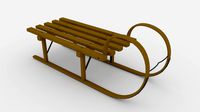
Sled
...ree 3d model sled for download as 3ds, obj, fbx, dae, and stl on turbosquid: 3d models for games, architecture, videos. (1481765)
turbosquid
$3
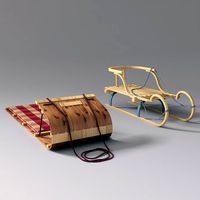
Sled
... available on turbo squid, the world's leading provider of digital 3d models for visualization, films, television, and games.
3ddd
$1

sled-288
...sled-288
3ddd
cassina
sled sofa with out the decorative pieces 800x800 pix
3d_export
$27
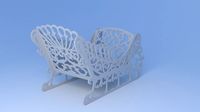
Sleds 3D Model
...sleds 3d model
3dexport
sled snowqueen
sleds 3d model 1ronwoodcutter 98064 3dexport
Hull
turbosquid
$22

steamship hull
... available on turbo squid, the world's leading provider of digital 3d models for visualization, films, television, and games.
turbosquid
$1

ship hull
... available on turbo squid, the world's leading provider of digital 3d models for visualization, films, television, and games.
3d_ocean
$15

Airplane Hull
... high quality, low polygonal model, tileable, easy to tile into a bigger model. - poly count: 2580 - formats: max /obj /fbx/3d...
3d_export
$13

armchair hull
...jects, and was originally modeled in 3ds max 2016,2013 and rendered with v-ray. renders have no postprocessing. hope you like it!
turbosquid
free

Ship hull Displacement
...d
free 3d model ship hull displacement for download as blend on turbosquid: 3d models for games, architecture, videos. (1209835)
turbosquid
$25

alex-hull-sofa
... available on turbo squid, the world's leading provider of digital 3d models for visualization, films, television, and games.
3d_export
$69

yacht hull clean and ruined
...ean and ruined
3dexport
yacht hull 3d model clean/ruined. lowpoly real-time ready, multiple import formats thank you for reading
3d_ocean
$6

METAL HULL - TEXTURE/MAPS
...ut this great texture. great tileable texture which is ready to use. with this texture you can easily texture: hulls of the sh...
turbosquid
$5

Capital ship carrier hull
... available on turbo squid, the world's leading provider of digital 3d models for visualization, films, television, and games.
3ddd
$1
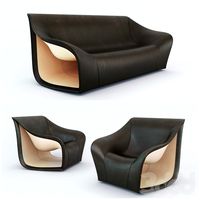
Split Sofa and Chair by Alex Hull
...ординаты текстур развернуты, модель готова к просчету.
общее количество полигонов - 64108.
форматы сцены в fbx и obj прилагаются.
Sea
3ddd
$1
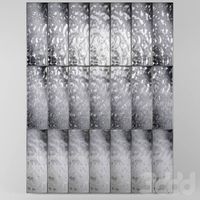
Sea Silver
...sea silver
3ddd
плитка , sea silver
плитка sea silver
3d_ocean
$13

Sea turtle
...sea turtle
3docean
lowpoly sea turtle
3d model of sea turtle.
turbosquid
$17

Sea
...
royalty free 3d model sea for download as max, obj, and stl on turbosquid: 3d models for games, architecture, videos. (1448257)
turbosquid
$16
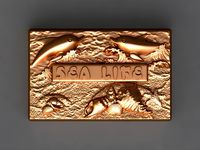
Sea
...
royalty free 3d model sea for download as max, obj, and stl on turbosquid: 3d models for games, architecture, videos. (1381127)
turbosquid
$15

Sea
...
royalty free 3d model sea for download as max, obj, and stl on turbosquid: 3d models for games, architecture, videos. (1347433)
turbosquid
$13
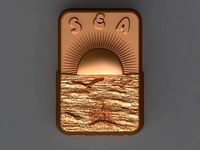
Sea
...
royalty free 3d model sea for download as max, obj, and stl on turbosquid: 3d models for games, architecture, videos. (1383491)
turbosquid
$9
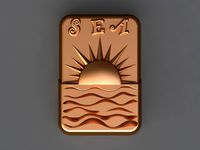
Sea
...
royalty free 3d model sea for download as max, obj, and stl on turbosquid: 3d models for games, architecture, videos. (1383007)
3d_export
$10
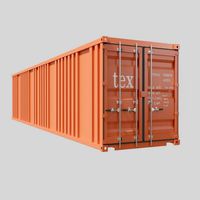
sea container
...sea container
3dexport
sea, cargo container
turbosquid
$12
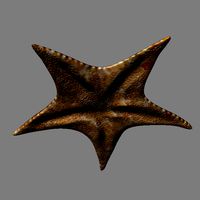
Sea Stars Pentagrams sea creatures
...model sea stars pentagrams sea creatures for download as max on turbosquid: 3d models for games, architecture, videos. (1629668)
turbosquid
$9

Sea
... available on turbo squid, the world's leading provider of digital 3d models for visualization, films, television, and games.
Sections
archibase_planet
free

Section
...section
archibase planet
storefront shelving rack
section 8 - 3d model (*.gsm+*.3ds) for interior 3d visualization.
archibase_planet
free

Section
...section
archibase planet
post storefront stay
section 10 - 3d model (*.gsm+*.3ds) for interior 3d visualization.
archibase_planet
free

Section
...section
archibase planet
sta post desk
section 6 - 3d model (*.gsm+*.3ds) for interior 3d visualization.
archibase_planet
free
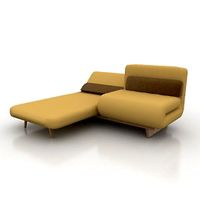
Section
...section
archibase planet
settee seat furniture
double section f1278 - 3d model (*.gsm+*.3ds) for interior 3d visualization.
archibase_planet
free

Section
...section
archibase planet
settee seat furniture
double section f1277 - 3d model (*.gsm+*.3ds) for interior 3d visualization.
archibase_planet
free

Section
...section
archibase planet
storefront glass case show-case
section 4 - 3d model (*.gsm+*.3ds) for interior 3d visualization.
archibase_planet
free

Section
...section
archibase planet
showcase show-case glass case
section 3 - 3d model (*.gsm+*.3ds) for interior 3d visualization.
3d_export
$5

sectional column
...sectional column
3dexport
sectional reinforced column 400x400 mm
turbosquid
free

Tree Section
...ction
turbosquid
free 3d model tree section for download as on turbosquid: 3d models for games, architecture, videos. (1263969)
turbosquid
$9

Sectional sofa
...uid
royalty free 3d model sectional sofa for download as max on turbosquid: 3d models for games, architecture, videos. (1638909)
